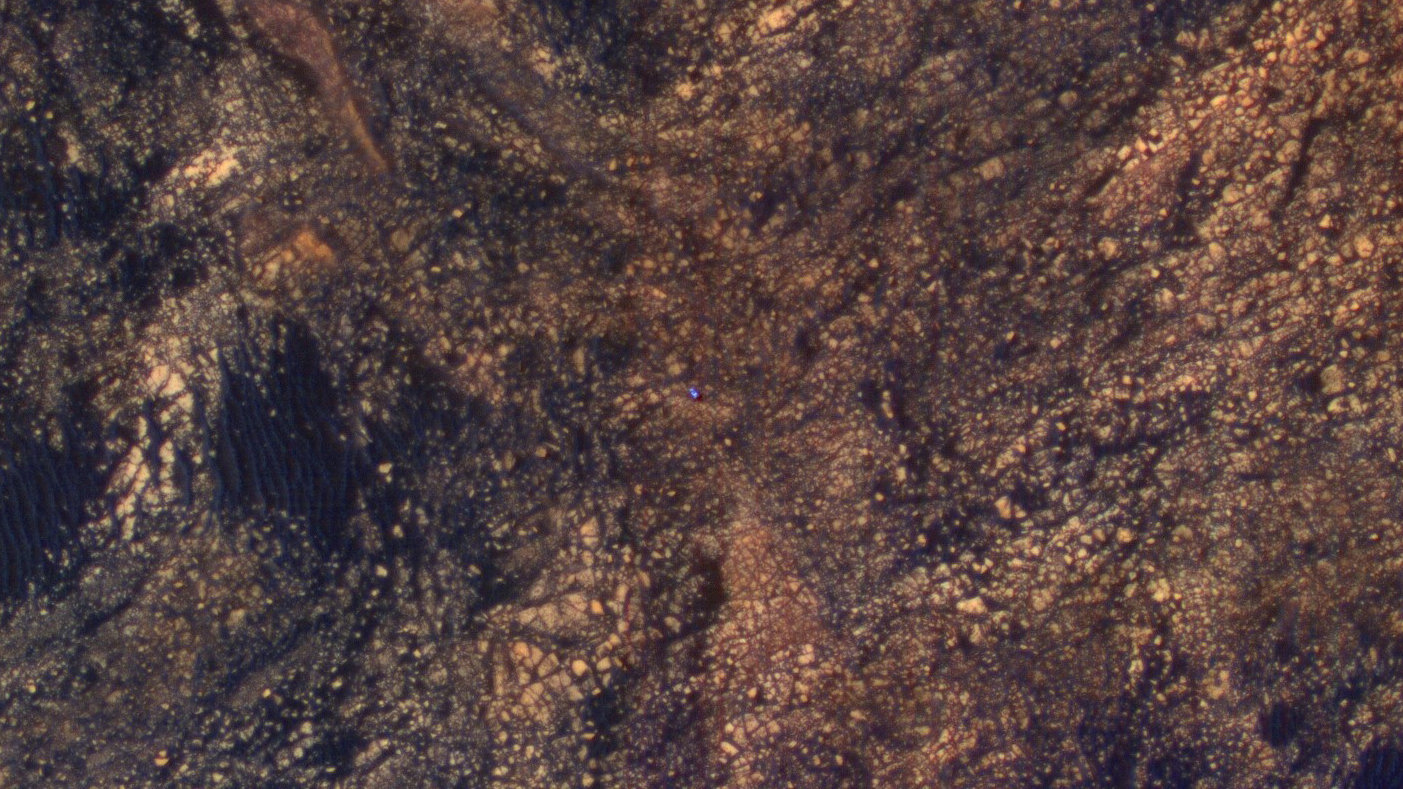Inspired by:
The color image, taken from a distance of 169 miles, is the combined view of three wavelength bands — red, blue-green and infrared.
Curiosity is not the only Earth visitor that has been spotted. In 2006, the orbiter took this image of the Opportunity rover, which showed not only the rover but also the tracks in the soil and even the shadow of its camera mast.
I'm going to guess no. The image is pretty small and poor resolution and it was taken at a range of 169 miles.
Would a very advanced camera be capable of capturing this small blue dot at a many light-year distance? Or are there limits to the capabilities of physics with regards to cameras?

